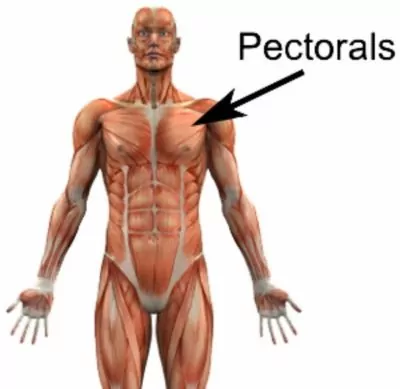Serratus Anterior Anatomy: An In-Depth Guide
Updated:
In this article, we explore the anatomy of the serratus anterior muscle, including it’s origin, insertion, actions, nerve supply, blood supply, and common injuries. Whether you’re a fitness enthusiast, a healthcare professional, or simply curious about the human body, join us as we explore the fascinating world of the serratus anterior muscle.
Serratus Anterior Anatomy:
The serratus anterior muscle, situated on the side of the rib cage, extends from the upper eight or nine ribs to the scapula (shoulder blade). It boasts a unique fan-like shape, originating from the outer surfaces of the upper eight or nine ribs and attaching to the medial border of the scapula (i.e the border closest to the spine). This configuration provides the serratus anterior with a vital role in stabilizing the scapula and enabling various shoulder movements.

Actions:
The serratus anterior muscle serves as a crucial protractor (bringing the shoulder blade forwards) and stabilizer of the scapula. By exerting a forward pull, it keeps the scapula in its proper position against the thoracic wall. Additionally, the serratus anterior aids in the upward rotation of the scapula during actions such as raising the arm overhead. It also contributes to stabilizing the scapula during upper arm / shoulder movements like pushing and punching motions and plays a vital role in optimal scapulo-humeral rhythm (i.e. shoulder girdle function).
Nerve Supply:
The long thoracic nerve, originating from the brachial plexus (C5-C7), innervates the serratus anterior muscle. Damage to this nerve can lead to weakness or paralysis of the muscle, resulting in a condition known as scapular winging. Proper diagnosis and treatment are necessary for restoring function and alleviating associated symptoms.
Blood Supply:
The serratus anterior muscle receives its blood supply from the lateral thoracic artery and the thoracodorsal artery. These arteries deliver oxygen and nutrients, supporting the muscle’s health and optimal functionality.
Common Injuries:
- Serratus Anterior Strain: Strains of the serratus anterior muscle can occur due to overuse, direct trauma, or sudden excessive force. Symptoms may include pain, tenderness, muscle spasms, and difficulties with specific shoulder and scapular movements.
- Scapular Winging: Damage to the long thoracic nerve can lead to scapular winging, characterized by weakness or paralysis of the serratus anterior muscle. This condition affects scapular mechanics, resulting in pain and limited shoulder function.
Conclusion:
Understanding the intricacies of the serratus anterior muscle is essential for grasping the mechanics of shoulder stability and overall musculoskeletal health. Whether you’re an athlete, a healthcare professional, or an anatomy enthusiast, this guide has provided you with valuable insights into the origins, actions, nerve supply, blood supply
Serratus Anterior Anatomy – References:
- Clark, M. A., Lucett, S. C., & Sutton, B. G. (2018). NASM Essentials of Personal Fitness Training (6th ed.). Burlington, MA: Jones & Bartlett Learning.
- Drake, R. L., Vogl, W., & Mitchell, A. W. M. (2021). Gray’s Anatomy for Students (4th ed.). Philadelphia, PA: Elsevier.
- Magee, D. J. (2014). Orthopedic Physical Assessment (6th ed.). St. Louis, MO: Saunders.
- Neumann, D. A. (2016). Kinesiology of the Musculoskeletal System: Foundations for Rehabilitation (3rd ed.). St. Louis, MO: Mosby.
For further information on the serratus anterior muscle and related topics, you can visit Ken Hub – Serratus anterior muscle: Origin, insertion and action

Link to this Page
If you would like to link to this article on your website, simply copy the code below and add it to your page:
<a href="https://physioadvisor.com.au/serratus-anterior-anatomy-an-in-depth-guide”>Serratus Anterior Anatomy: An In-Depth Guide – PhysioAdvisor.com</a><br/>Learn about serratus anterior anatomy on Physioadvisor including origin, insertion, actions, nerve supply, blood supply, common injuries...
Return to the top of Serratus Anterior Anatomy: An In-Depth Guide.
